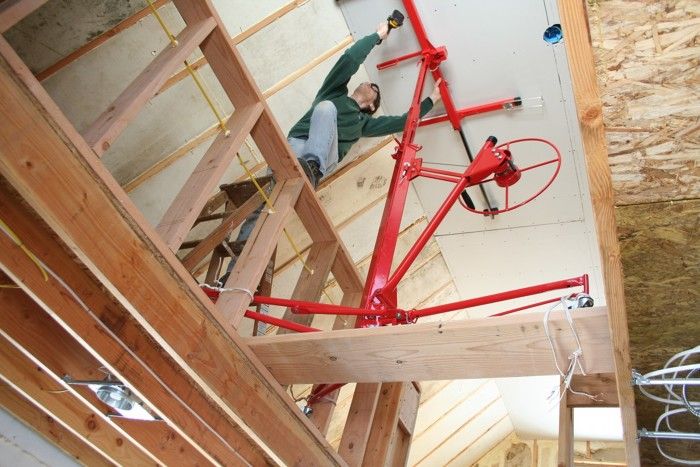
One of the great things about working on your own projects is that you can decide for yourself what’s an appropriate amount of risk. I’ve been thinking about how to hang the drywall over my barn’s stair opening for weeks now. My first plan was to build a temporary floor to support my new drywall lift, but the 5-ft. by 12-ft. opening wasn’t very material friendly. It would also mean I’d be stuck up there until the job was done.
My second idea came during a period of insomnia when I decided I only needed a platform for one wheel. This method was finally distilled to a single plank spanning the opening. I took some measurements to ensure that the lift would be in the center of the nearly 12-ft. sheet. I put the plank in the right spot and disassembled the lift to make it easier to put it into position. I locked all the casters and lashed the legs to the half-wall and plank with Romex wire, and then I put the lift tower onto the wheeled base while standing on the safer side of the half-wall.
When my wife popped in to check on my progress, she looked at my rig and declared, “That’s definitely not OSHA approved.” I suspect she’s right, but I had near-total confidence in the rig after giving it a good shake. The only scary part was getting the sheet on the lift solo. I should have asked my wife for help, but I didn’t want to risk anyone’s safety but my own. Once the panel was on the lift, I took it up slowly and steadily. When it was touching the ceiling, it was very stable, and I breathed a sigh of relief. In retrospect, I should have hung this most-difficult sheet first, as it took a little too much fine-tuning to make it fit. It would have been much easier had it been the first sheet to go on the ceiling.
You can read more about my barn here.
Fine Homebuilding Recommended Products
Fine Homebuilding receives a commission for items purchased through links on this site, including Amazon Associates and other affiliate advertising programs.

8067 All-Weather Flashing Tape

Handy Heat Gun

Affordable IR Camera
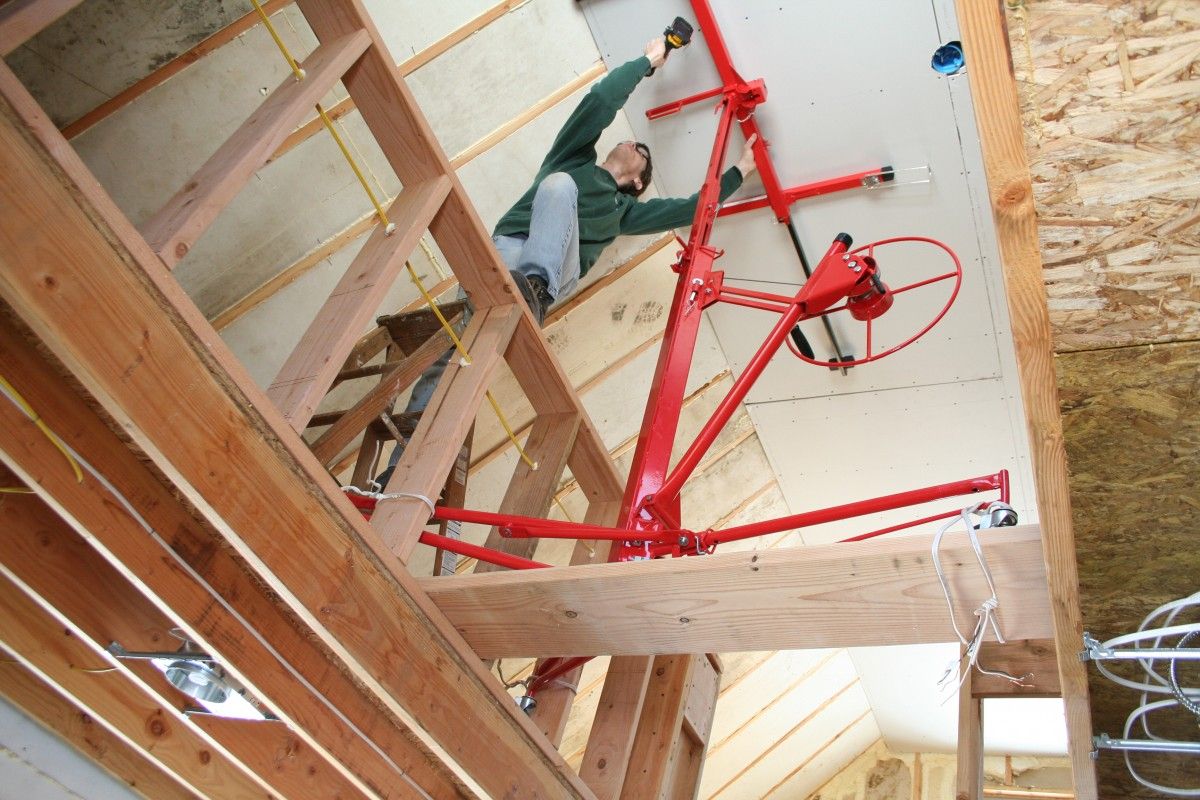
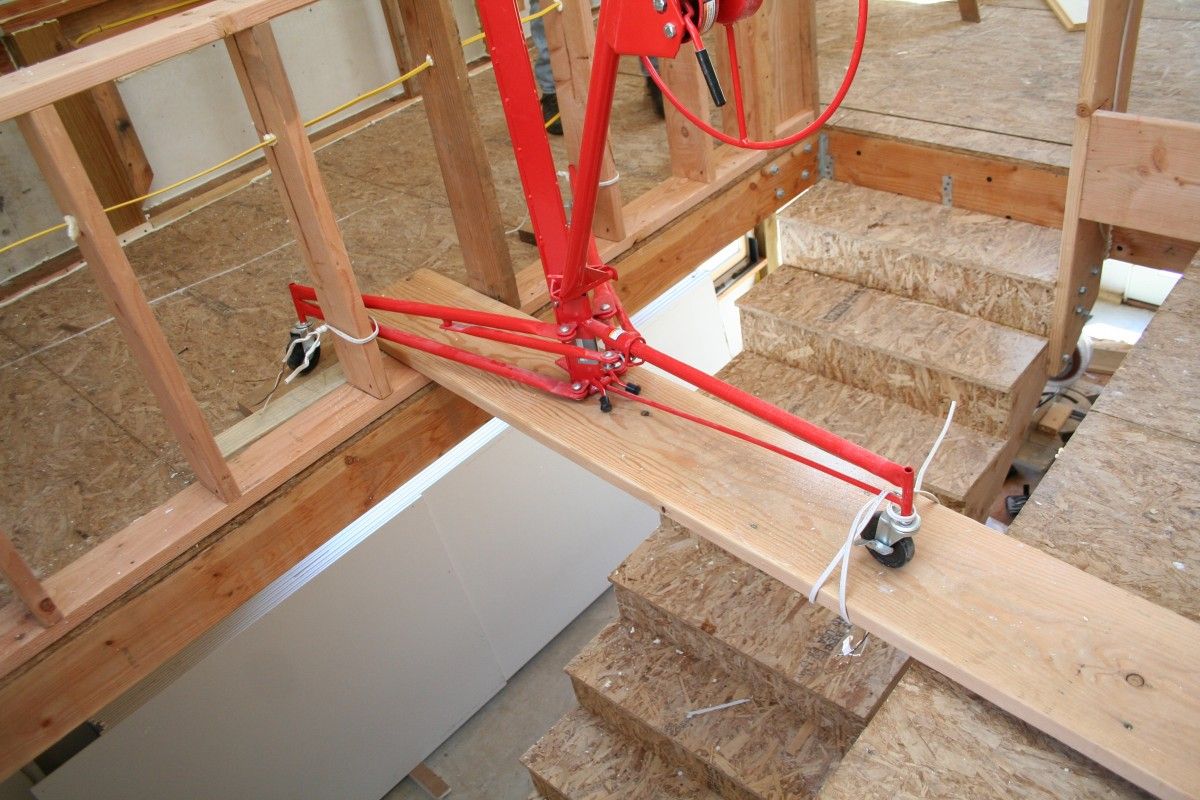
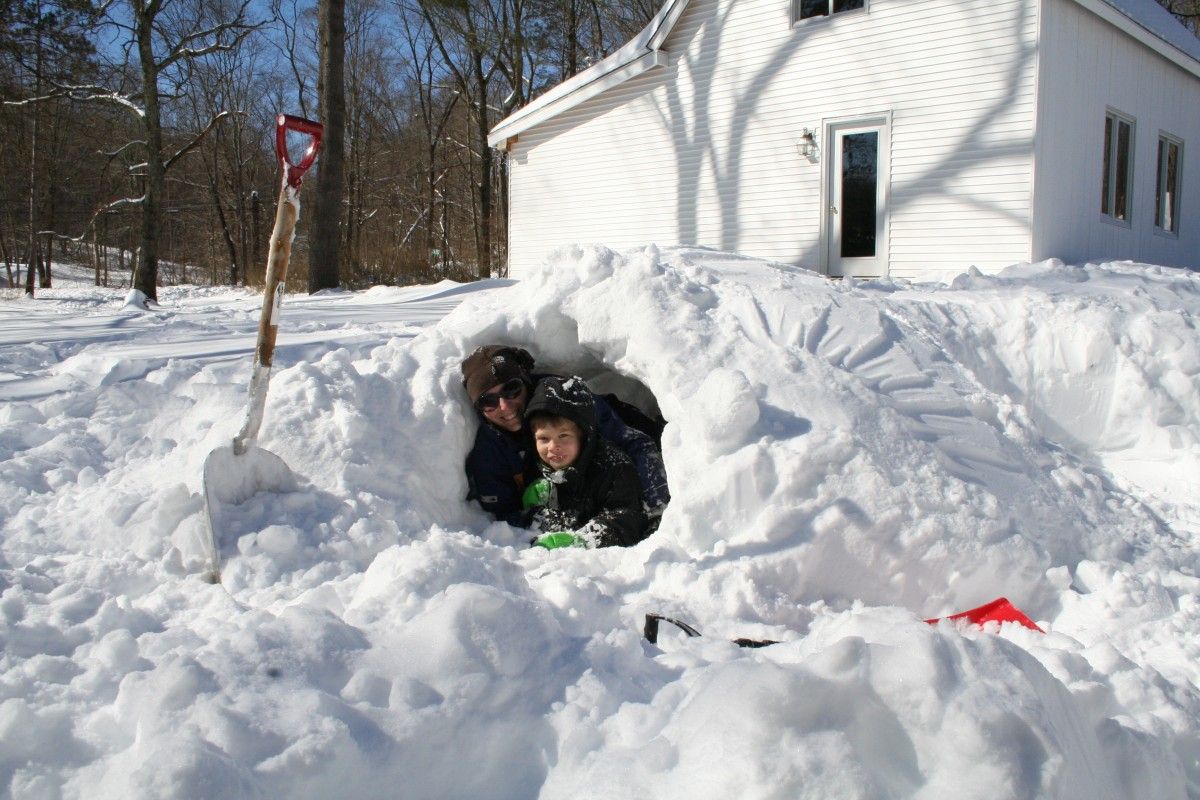
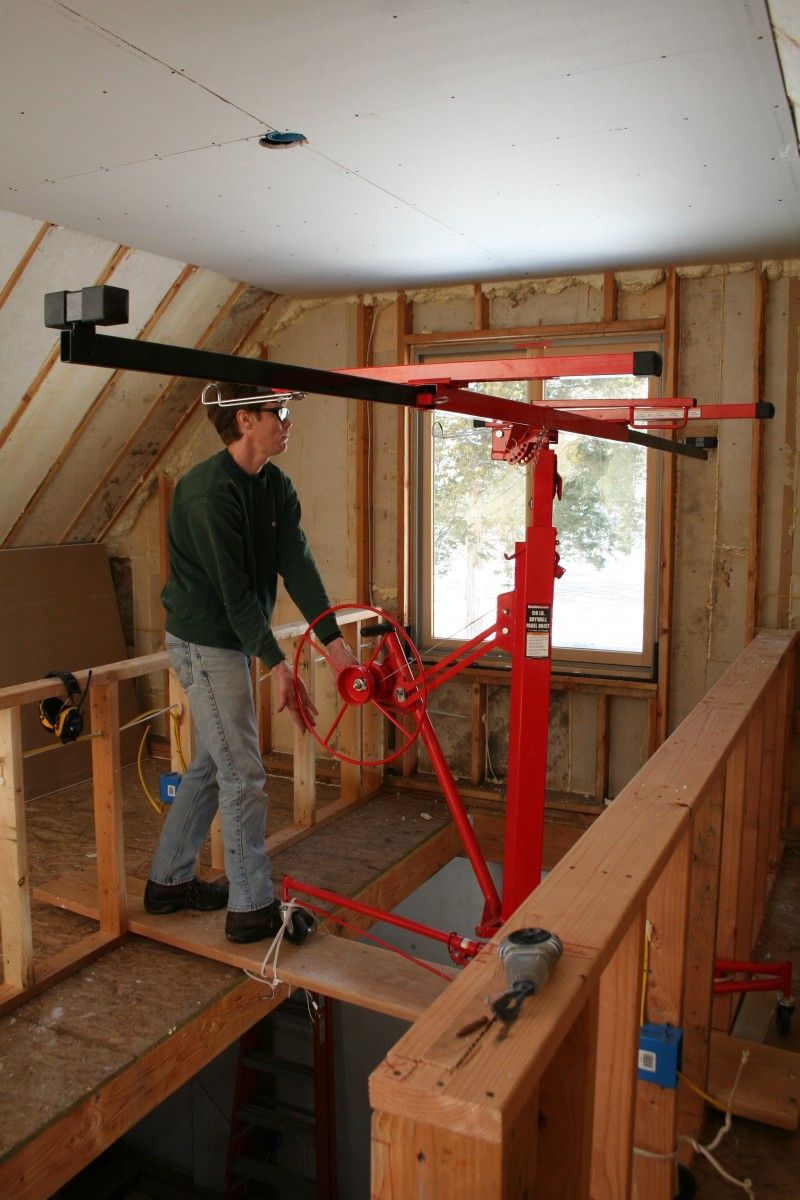



























View Comments
Not a bad solution but I think I just would have thrown a couple of more 2x10's across the two stem walls and laid down a piece of playwood. Then you call the wifey and tell her to hold the drywall with her head. Your way avoided a potential argument but mine would have been quicker and allowed for makeup se.................
Your idea is probably better, Cussnu2. The second part definitely!
Why would you ever do something so dangerous at work, and then proudly post a picture of it? Part of being a fine home builder is working safely!! Not wearing a harness while balancing on a 2x6 15 ft above the ground has no place in a building magazine. You guys post pictures and stories of $200,000 kitchen remodels, and in the same forum post a picture of someone who is too cheap to rent some scaffolding to do a job safely. There is definately room in the budgets of the projects you do to do everything safely and by the book. You can not put a price on safety, ever! You should be ashamed of this post. This is homeowner quality work, not professional grade.
Thanks for the comment bski. I'm curious. You'd rent scaffold to hang one sheet of drywall? How does one set it up on a 39-inch wide staircase? Where does one tie off in such a situation?
Have you ever gone skiing or rock climbing? Aren't they more dangerous than sitting at home?
Yes, I would rent scaffolding to hang one sheet of drywall if the project called for it. I would not put myself or my employees at risk just to save a few dollars. In this case, seeing as how scaffolding would have been a little overkill, I would have built a platform out of 2x4s and plywood. You could easily have tacked together a temporary platform that covered the whole stairwell to work safely and comfortably for both hanging and finishing the ceiling in less than ten minutes. Construction is already a dangerous job. There is no sense in making it worse.
Yes, your desciption of a 2x4 platform is what I first had in mind, but it just seemed like overkill. Of course I'd feel differently if my method put me in the hospital. I appreciate your thoughts.
Calculated risks are only a bad idea if they fail. Hindsight will usually correct your daily risk factors and then you can proceed accordingly.